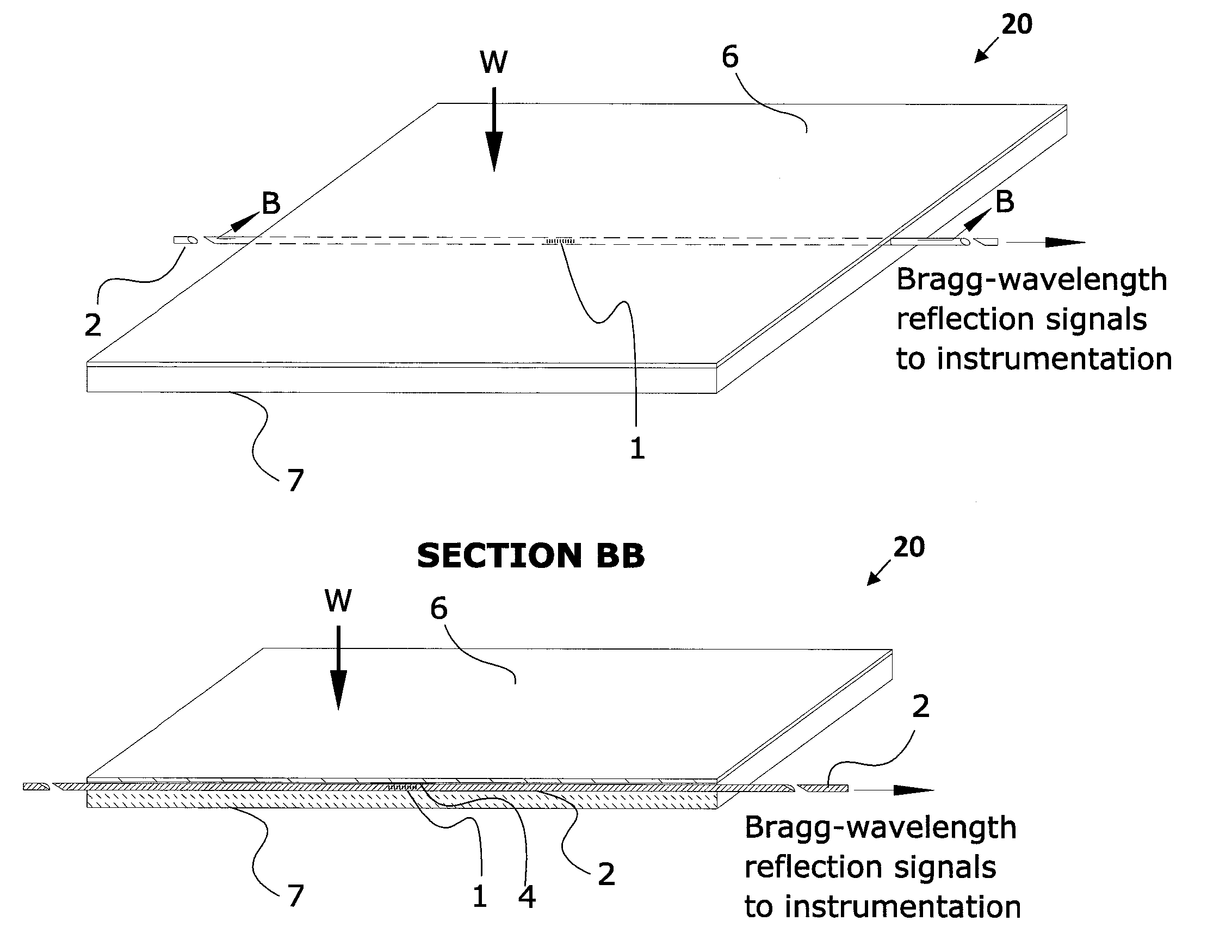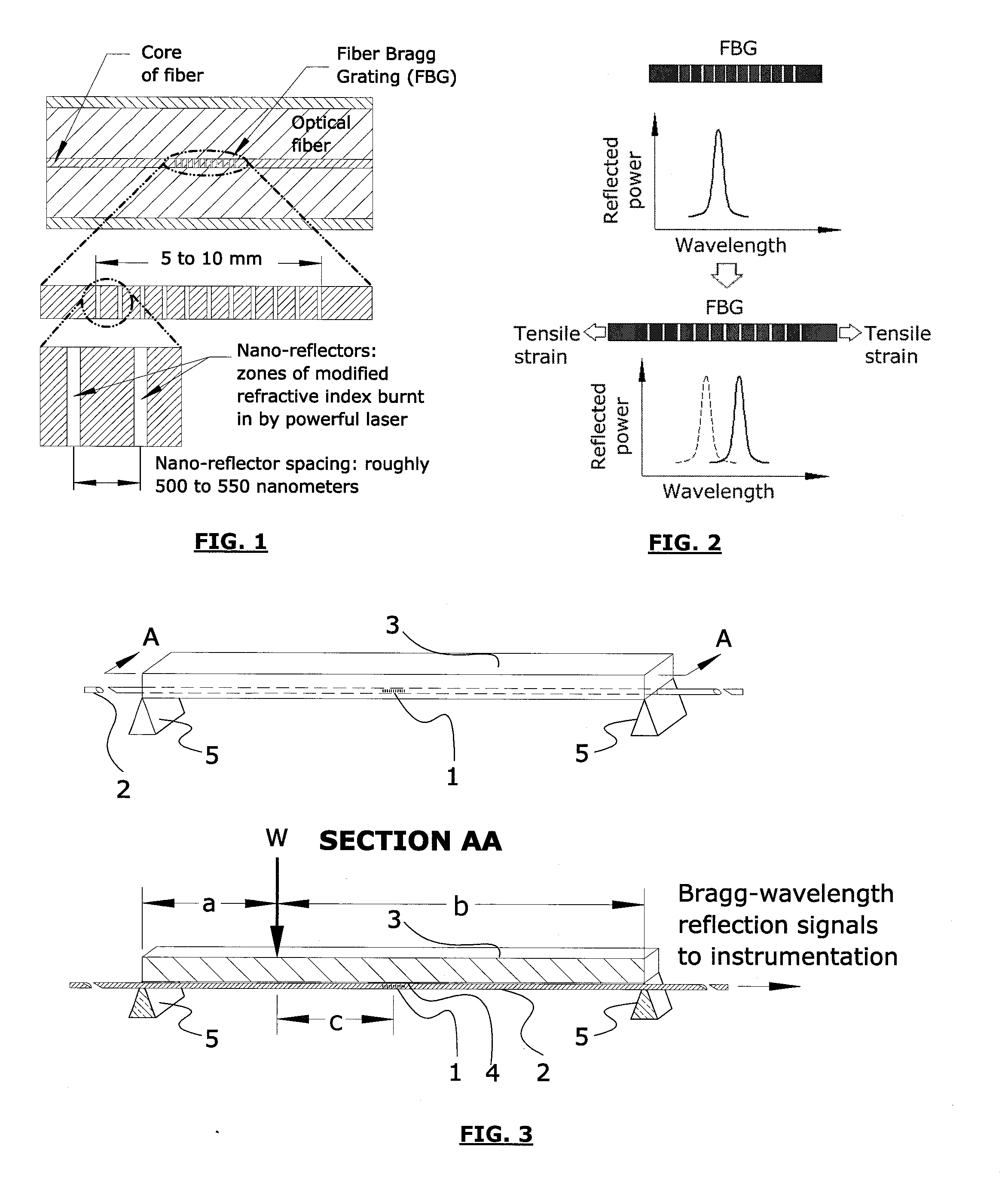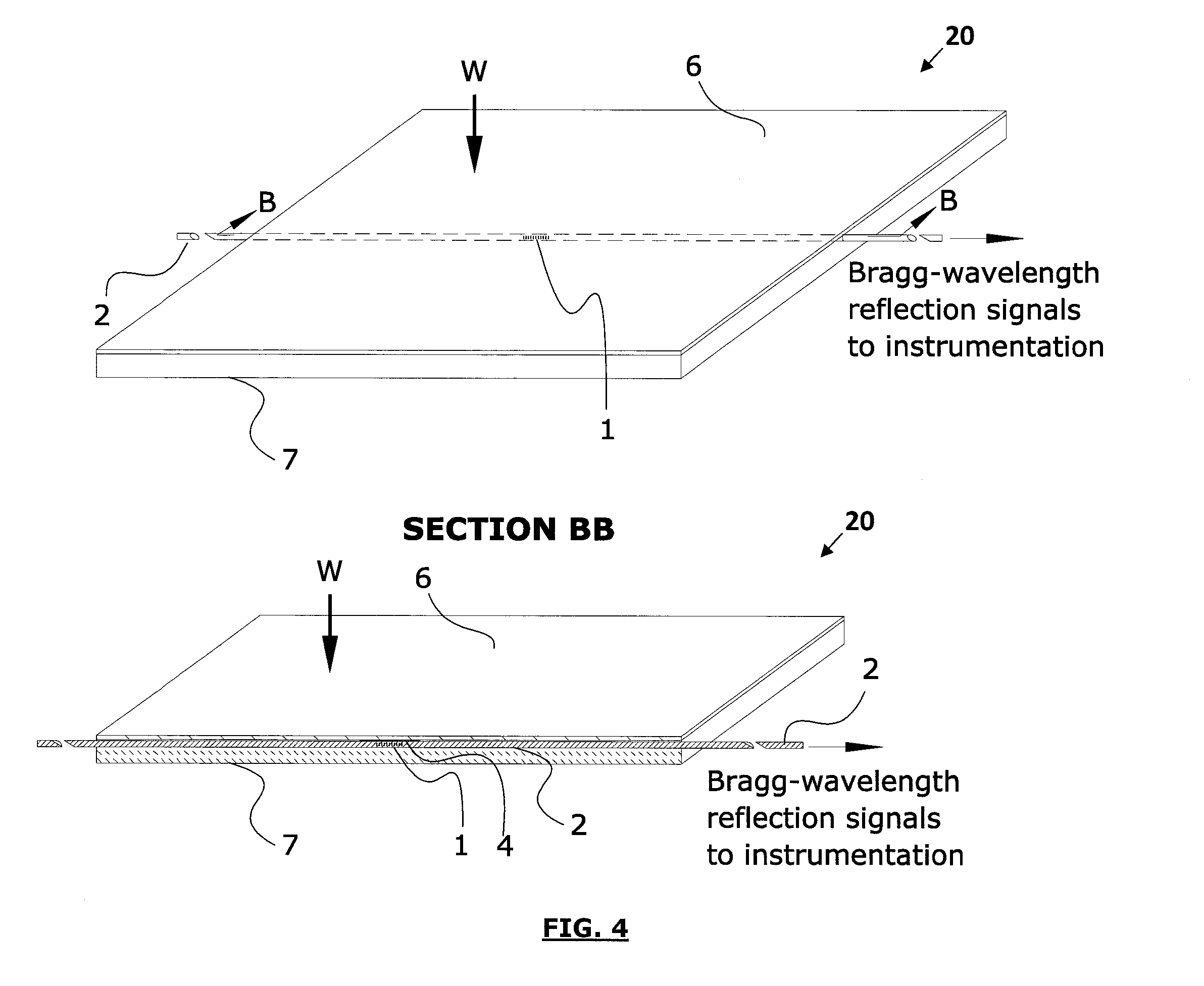Fiber optic security mat system
a fiber optic and mat technology, applied in the field of security monitoring, can solve the problem of insufficiently sensitive over the surface of the mat to avoid, and achieve the effects of complete emi immunity, low cost, and easy installation
- Summary
- Abstract
- Description
- Claims
- Application Information
AI Technical Summary
Benefits of technology
Problems solved by technology
Method used
Image
Examples
first embodiment
[0060]According to this invention, the security mat sensing device of the security system can include the following five mutually bonded layers, listed from top to bottom:
[0061]The first layer can include an elastomeric or plastic mat, such as a mat designed to carry foot traffic, of sufficient durometer and thickness to resist puncture and wear, yet with sufficient flexibility to transmit load to the layers below.
[0062]The second layer can include an upper thin compliant layer of highly resilient material such as elastomer foam to substantially decouple mat properties from the adjacent strain sensor assembly and thereby transmit substantially vertical loads to the membrane strain sensor assembly below.
[0063]The third layer can include a membrane strain sensor assembly, which includes a plurality of unbuffered fiber Bragg gratings (FBGs), as well as their immediately adjacent short sections of fiber, bonded at strategic locations to the underside of a polymer, composite, or metallic...
tenth embodiment
[0075] the security mat sensing device of the security system includes the following mutually bonded three layers, listed from top to bottom:
[0076]A first layer can include combination polymer-membrane and mat strain sensor assembly, which includes a plurality of buffered or unbuffered fiber Bragg gratings (FBGs), as well as their immediately adjacent short sections of fiber, bonded at strategic locations to the underside of a polymer sheet that functions both as a mat—such as a mat designed to carry foot traffic—and as a mechanical membrane. The combination membrane and mat has sufficient modulus and thickness to transmit strains from incident loads anywhere on its upper surface to one or more of the fiber Bragg gratings on its lower surface, so as to cause readily measurable shifts in fiber Bragg grating characteristic reflected Bragg wavelengths. However, the combination membrane and mat must not be so thin as to transmit strain inadequately and be damaged easily, and not so thic...
eleventh embodiment
[0079]According to an eleventh embodiment, the security mat sensing device of the security system includes the following mutually bonded two layers, listed from top to bottom:
[0080]The first layer can include the first layer, or combination polymer-membrane and mat strain sensor assembly, of the tenth embodiment; and
[0081]The second layer can include a bottom compliant layer having a density, compressive modulus, resilience, and thickness that allows the membrane strain sensor assembly to flex and recover sufficiently to transmit strain to the fiber Bragg gratings. Additionally, this compliant layer is supportive enough to prevent damage to the membrane strain sensor assembly when the mat layer is subjected to foreseeable loads. The compliant layer is also strong enough to protect the upper layers from damage and provides a surface that resists sliding or can be bonded to a variety of substrates. In some embodiments, a soft elastomeric polymer, such as low durometer neoprene, would ...
PUM
| Property | Measurement | Unit |
|---|---|---|
| diameter | aaaaa | aaaaa |
| diameter | aaaaa | aaaaa |
| metallic | aaaaa | aaaaa |
Abstract
Description
Claims
Application Information
 Login to View More
Login to View More - R&D
- Intellectual Property
- Life Sciences
- Materials
- Tech Scout
- Unparalleled Data Quality
- Higher Quality Content
- 60% Fewer Hallucinations
Browse by: Latest US Patents, China's latest patents, Technical Efficacy Thesaurus, Application Domain, Technology Topic, Popular Technical Reports.
© 2025 PatSnap. All rights reserved.Legal|Privacy policy|Modern Slavery Act Transparency Statement|Sitemap|About US| Contact US: help@patsnap.com



